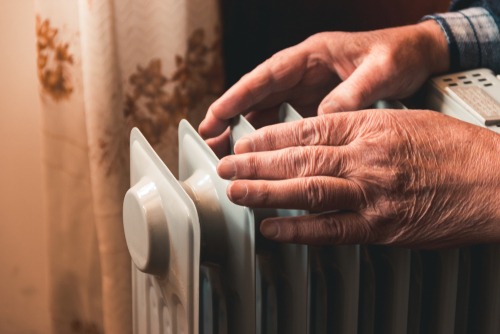National Energy Assistance Directors’ Association calls for $5B extra to ramp up LIHEAP

The National Energy Assistance Directors’ Association (NEADA), the primary educational and policy organization for state directors of the Low Income Home Energy Assistance Program (LIHEAP), wants congressional leaders to add another $5 billion to the Build Back Better Act so that LIHEAP can help Americans cover rising energy-related costs.
“We are very concerned that the current federal funding for LIHEAP will not be sufficient to meet the needs of low-income families in light of the alarming winter heating forecast released last week by the Energy Information Administration (EIA),” wrote NEADA Board Chair Barbara Klug in an Oct. 18 letter sent to Speaker of the House Nancy Pelosi (D-CA), Senate Majority Leader Chuck Schumer (D-NY), Senate Minority Leader Mitch McConnell (R-KY), and House Minority Leader Kevin McCarthy (R-CA).
The EIA on Oct. 13 released a winter fuels forecast as part of its October 2021 Short-Term Energy Outlook, which noted that the average American household expenditures for all major home heating fuels will increase significantly this winter primarily because of higher expected fuel costs, as well as more consumption of energy due to a colder winter.
Compared with last winter, the EIA forecasts propane expenditures will rise by 54 percent, heating oil by 43 percent, natural gas by 30 percent, and electricity by 6 percent, according to its report.
“We expect space heating demand to generally be higher this winter based on forecasts from the National Oceanic and Atmospheric Administration that U.S. average heating degree days will be 3 percent higher than last winter,” EIA reported. “Altering our assumptions for a 10 percent colder-than-expected winter significantly increases forecast expenditures, while a 10 percent warmer-than-expected winter still results in increased expenditures because of price increases.”
And due to that forecast, NEADA wants Congress to provide the additional $5 billion through budget reconciliation for LIHEAP, which was signed into law in 1981 and currently helps nearly 6 million families pay their energy bills every year.
“The writing is on the wall,” NEADA Executive Director Mark Wolfe told Daily Energy Insider on Wednesday. “Energy will be more expensive this winter and the intent of the letter is to allow us to get out in front of these increases by asking for additional resources.”
According to Wolfe, as well as the NEADA letter, $2.5 billion of the $5 billion total requested by NEADA would be used to address lost purchasing power as a result of higher prices.
“The LIHEAP appropriation is not designed to increase when prices rise,” wrote Klug in the organization’s letter. “When the cost of fuel goes up, the amount of product LIHEAP can purchase decreases.”
As a result, Klug wrote, the purchasing power of the fiscal year 2021 appropriation will be reduced by $1.14 billion from $3.8 billion to $2.7 billion, while the $4.5 billion in remaining stimulus funds will be reduced by $1.35 billion to $3.15 billion for a net reduction in purchasing power of roughly $2.5 billion.
Wolfe explained that NEADA wants to make the point that rising prices undermine the purchasing power of LIHEAP.
“An increase of 30 percent in home energy costs is significant and our program’s appropriation does not automatically adjust for higher prices,” he said. “As a result, the amount of product the states can purchase will be reduced by a corresponding increase in the price of energy.”
The next $1.5 billion of the $5 billion requested by NEADA would address the need for additional energy assistance for families who don’t normally apply for help, but this year will be unable to pay their bills due to rising prices, said Wolfe, who added that NEADA’s letter refers to this as growth in “arrearages” — or late payments on utility bills.
“With rising prices we expect arrearages to grow,” Klug wrote, noting that outstanding arrearages are double the average normally seen at this time of year, “possibly as high as $24 billion as compared to a normal range of about $12 billion,” she wrote.
The remaining $1 billion of the $5 billion requested by NEADA would be used as a “downpayment” on addressing cooling costs, said Wolfe.
“The [Biden] administration has proposed that states use more of their LIHEAP funds to address cooling,” said Wolfe. “This would allow us to begin ramping up the purchase of air conditioning equipment and cover their operating costs.”
Klug noted in NEADA’s letter that current funding is not sufficient to fulfill the administration’s request. “However, we believe that cooling is an important tool for struggling families and if we had the resources, we could move quickly to expand the current LIHEAP cooling benefits,” she wrote.
NEADA’s request is in addition to the $3.9 billion proposed on Monday by the Senate Appropriations Committee, an increase of $175 million from last year that NEADA said still wouldn’t be enough to address the increased cost of heating fuel this winter, nor would it allow states to address the growing cooling needs as a result of climate change.
“For many struggling families, higher prices can mean being forced to choose between heat, food or medication,” agreed Klug.
Currently, the federal government is operating under a Continuing Resolution through Dec. 3 based on 2021 funding levels. The U.S. Department of Health and Human Services is expected to release 90 percent of these funds to states by the end of October.
